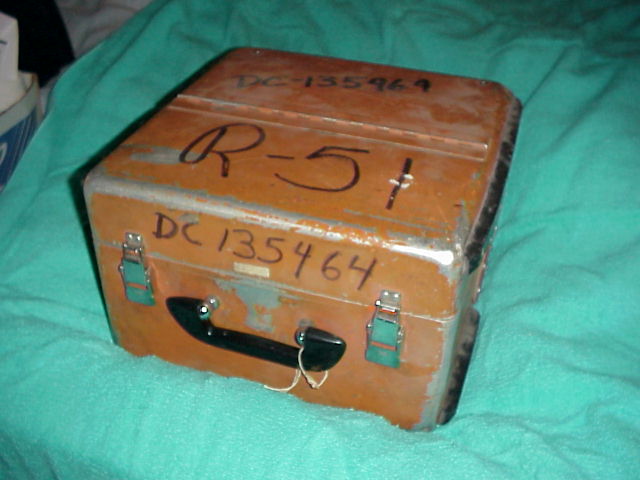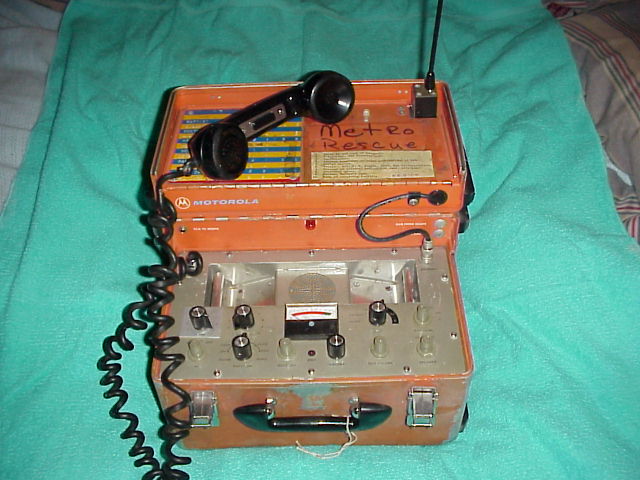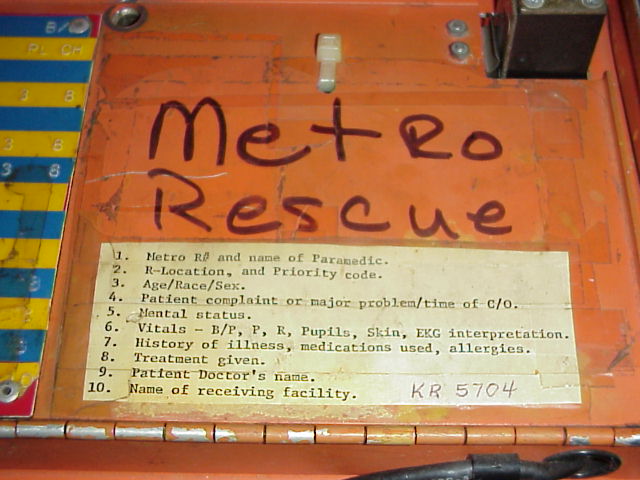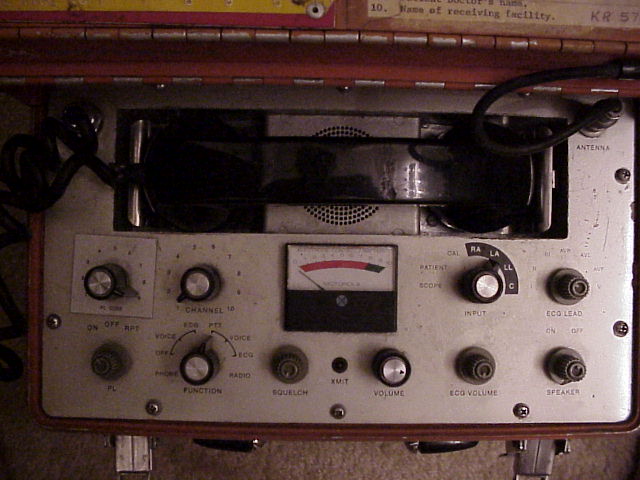There's a lot of history here in Miami-Dade when it comes to Emergency
Medical Radio Communication. Equipment we take for granted today was developed
here in Miami.
Hopefully Dr. Jim Hirschman, K4TCV, will be able to give us a write up
on his early work on remote telemetry. Until then, here's some history from the City
of Miami Fire Department History Page.
Miami's role in EKG advancement
"Soon, the department would make more history. The City
of Miami Fire Department was the first in the nation to make radio contact
between hospitals and firefighters in the field in 1965. Around this time
another Miami doctor, University of Miami clinical professor Dr. Jim
Hirschman, was also making medical history with radios. Dr. Hirschman
combined his radio expertise with a career as a distinguished cardiologist.
With this background, Dr. Hirschman assisted surgeons off the coast of Africa
aboard the medical ship, the SS Hope, by radio. Dr. Hirschman evaluated
cardiac signals sent from the ship’s EKG to his office in Miami, and was
then able to analyze the patient’s situation and transmit life-saving advice
to the doctors who performed the emergency surgery.
"Dr. Nagel read about Dr. Hirschman’s success, and
when he learned that he also lived in Miami, he contacted the accomplished
cardiologist and asked him to devise a similar “telemetry system” to help
The Miami Fire Department. Dr. Hirschman then worked with City of Miami radio
expert, Ben Denby, to devise a more thorough version of his “telemetry
system.” It was a radio transmitter that used a modulator to convert the
heart’s electrical signal into an audio tone in order to transmit it over
the radio.
"Soon The Miami Fire Department made history again when
it became the first department in the country to use radio transmissions of
EKGs sent from firefighters in the field to doctors in a hospital base. As
impressive as this was, it was not so helpful in treating the patients,
because there was little the firefighters could do legally in the way of
treatments. However, the radio transmissions did show that many patients died
who could have been revived with an electrical cardiac shock called
defibrillation.
"A defibrillation hadn’t been performed in the field
before, because conditions had to be just right. The patient had to be without
any life signs, or physically “dead,” so that firefighters could not be
charged with causing a death. Moreover, the doctors in the hospital had to be
absolutely sure of this with the flawless EKG transmission from the field.
"In June, 1969, The Miami Fire Department became the
first fire department in the United States to successfully revive a lifeless
patient in the field through defibrillation. By using radio transmission of
the EKG, combined with verbal radio contact with doctors at Jackson Memorial
Hospital and the University of Miami School of Medicine, the firefighters were
authorized to “shock” the first patient in the United States who was
revived from a lifeless state. This development was soon done on the fire
departments of Los Angeles, Seattle, and other metropolitan departments."
There's much more to ready on the City
of Miami Fire Department History Page.

Dade County has used many generations of medical telemetry devices.
I own a unit that was retired by the County in the 1990's. It's a
full duplex 450 MHz radio, 10 channels, 9 PL codes. The system is called
"Medcom." In addition to voice, it also interfaces to an EKG so that the
doctors in the hospital can see the heart beat of the patient. If anyone has
any additional information about this unit, I would like to have it. If you have
another generation unit, please send me some pictures and information.
This is the unit as it would be ready to carry from the Rescue to the
patient. 32 pounds. I'm sure today's units are much lighter. Yes,
it's Rescue 51. No relation to the one on the TV show "Emergency" but it
is a nice coincidence. It's a model SP5827181, s/n S0202H. I'm sure it
had a shorter name. Anyone know it?

Here it is opened up and ready to communicate. The
information under the handset told the Paramedics which channel and PL to use for each
local Hospital. This was designed before the days of microprocessors and
synthesizers, so it had 20 crystal channel modules and 18 PL reeds.

Here's a reminder to the Paramedics on what to cover in the transmission
to the Hospital. I assume the KR5704 is the call sign.

Here's a close up of the controls. Channel and PL are upper
left. EKG data on the right.

12/20/04